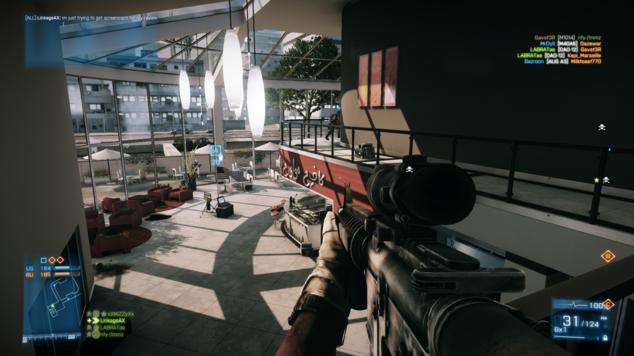The first thing that you will notice about the Taipan is its sleek contours, black matte finish, the two LED areas (one of them being the well-known Razer logo), and simplicity. There's not buttons everywhere. It's just a simple, good design. Then you'll want to touch it. Since it's symmetrical, you'll get the same comfortable hold with either hand. There's a rubber thumb grip on both sides that makes it feel great in your hand, and the two thumb buttons are perfectly placed. Those with bigger hands might find it a little dainty, and you might even find your pinky finger not having a place on the mouse to rest. While these things didn't bother me, it might bother some other gamers that aren't used to it.

The Razer Taipan comes with nine programmable buttons (though two of those probably won't be used depending on which hand you use). One little thing that annoyed me was clicking in the scroll button; it could be a bit finnicky at times. And instead of Razer putting in options for changing the weight of the mouse, they just got feedback from pro-gamers on a weight, shape and balance that would be perfect for multiple users. The Taipan's cord is sleek, with its braided black wire that never snags. The whole package is just so aesthetically pleasing to look at.
Looks are nice and all, but PC gamers want to know how it handles. Let's just say the Taipan is more than capable of handling any game you're going to use it for. The Taipan sports an 8200dpi 4G Dual Sensor System. Sounds fancy, right? What it means is that it uses a laser and an optical sensor to calibrate the mouse to whatever surface you're using. And with Razer Synapse 2.0 (which I'll touch on later), you can even calibrate to specific mouse pads or surfaces you're using. Now you might not notice a big difference with the dual laser/sensor, but just go back to whatever mouse you were using before and you will feel a difference. It might not make you instantly better at whatever game you're playing, but the responsiveness is definitely improved. I definitely noticed a big improvement battling liftoff while playing Battlefield 3.

And this might not seem like a big deal for a lot of people, and it probably isn't, but with the top two buttons, you can instantly switch between pre-set dpi settings. It'll even show on-screen what dpi you're at. That's big for me considering I switch depending on what game I'm playing, and my wife also messes with it when she's using my computer. It's just a nice ease-of-use thing that Razer is known for.
If you're going for a high level of customization, the Razer Taipan makes full use of Razer's new Synapse 2.0. Synapse allows you to save your mouse settings over cloud storage. In Synapse, you can change DPI, liftoff, polling rate, and even calibrate the Taipan to whatever surface you're using it on. It allows for precise settings that each user will like.
The Razer Taipan is an excellent all-around mouse that can really shine no matter what game you're playing. I've played it from Battlefield 3 to League of Legends to Guild Wars 2 beta, and with minor settings adjustments, it continued to be exactly what I needed. It has a simple and sleek design that'll catch the eye. While it's comfortable, the ambidextrous design and what is essentially a seven-button mouse might not be what some gamers are looking for, especially with the ring and pinky finger placement. But one thing's for sure, the Taipan has sunk its teeth in me.
Specs:
You can follow Movies and Culture Editor Lance Liebl on Twitter @Lance_GZ
Via: Razer Taipan review being ambidextrous has never been so sexy
















































